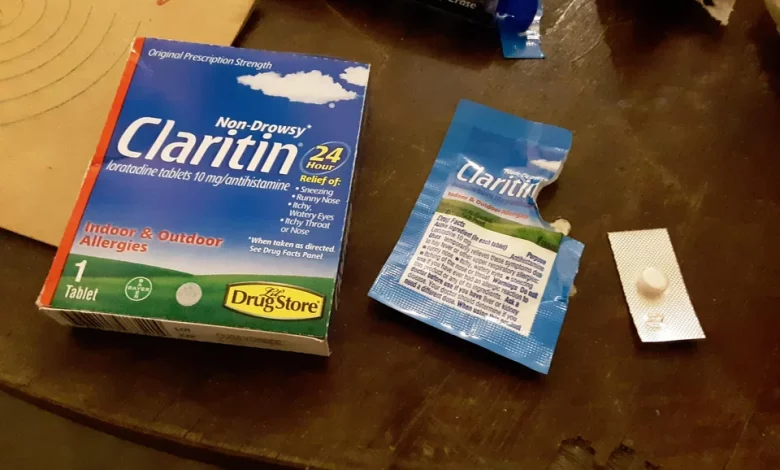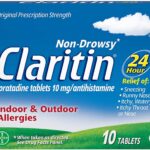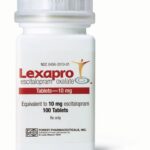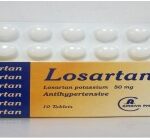Accidentally Took 20 mg Loratadine: What to do!

Loratadine is used to temporarily relieve the symptoms of hay fever (allergy to pollen, dust, or other substances in the air) and other allergies. These symptoms include sneezing, runny nose, and itchy eyes, nose, or throat. Loratadine is also used to treat itching and redness caused by hives. However, loratadine does not prevent hives or other allergic skin reactions. Loratadine is in a class of medications called antihistamines. It works by blocking the action of histamine, a substance in the body that causes allergic symptoms.
common brand names of loratadine include Alavert, Allergy Relief, Claritin, Claritin Hives Relief, Claritin Liqui-Gel, Claritin-D 24 Hour, Clear-Atadine, QlearQuil All Day & All Night Allergy Relief, Tavist ND.
How should loratadine be used?
Loratadine comes as a syrup (liquid), a tablet, and a rapidly disintegrating (dissolving) tablet to take by mouth. It is usually taken once a day with or without food. Follow the directions on the package label carefully, and ask your doctor or pharmacist to explain any part you do not understand. Take loratadine exactly as directed. Do not take more or less of it or take it more often than directed on the package label or recommended by your doctor. If you take more loratadine than directed, you may experience drowsiness.
If you are taking the rapidly disintegrating tablet, follow the package directions to remove the tablet from the blister package without breaking the tablet. Do not try to push the tablet through the foil. After you remove the tablet from the blister package, immediately place it on your tongue and close your mouth. The tablet will quickly dissolve and can be swallowed with or without water.
Typical dosing for loratadine:
- The typical dose for adults and children 6 years and older is 1 tablet (10 mg) by mouth once a day. Do not take more than 1 tablet in 24 hours.
- Loratadine is also available as a liquid that can be given to children 2 to 6 years old. The typical dose is 1 teaspoonful (5 mg) by mouth once a day. Do not give more than 1 teaspoonful in 24 hours.
Do not use loratadine to treat hives that are bruised or blistered, that are an unusual color, or that do not itch. Call your doctor if you have this type of hives.
Stop taking loratadine and call your doctor if your hives do not improve during the first 3 days of your treatment or if your hives last longer than 6 weeks. If you do not know the cause of your hives, call your doctor.
If you are taking loratadine to treat hives, and you develop any of the following symptoms, get emergency medical help right away: difficulty swallowing, speaking, or breathing; swelling in and around the mouth or swelling of the tongue; wheezing; drooling; dizziness; or loss of consciousness. These may be symptoms of a life-threatening allergic reaction called anaphylaxis. If your doctor suspects that you may experience anaphylaxis with your hives, he may prescribe an epinephrine injector (EpiPen). Do not use loratadine in place of the epinephrine injector.
Do not use this medication if the safety seal is open or torn.
Can you overdose on loratadine?
Yes, you can overdose on loratadine when you consume over the recommended dosage. This can result in several unwanted but less toxic and less severe symptoms that may include:
- dizziness
- headache
- drowsiness
- agitation
Sometimes, however, tachycardia can occur with loratadine overdose. This is when your resting heart rate is more than 100 beats per minute.
Symptoms of loratadine overdose usually appear within six hours of taking too much antihistamine. Your symptoms may start off mild and then gradually worsen over time.
What to do if you accidentally took 20 mg loratadine?
If you accidentally took 20 mg loratadine, you should call the American Association of Poison Control Centers (AAPCC) at 1-800-222-1222. The AAPCC helpline is open 24 hours and is toll-free.
If a person has severe symptoms, such as trouble breathing, fast or slow heart rate, seizures, or loss of consciousness, call 911 or go to the nearest emergency room.
What side effects you may notice from taking loratadine?
Side effects that you should report to your doctor or health care professional as soon as possible:
- allergic reactions like skin rash, itching or hives, swelling of the face, lips, or tongue
- breathing problems
- unusually restless or nervous
Side effects that usually do not require medical attention (report to your doctor or health care professional if they continue or are bothersome):
- drowsiness
- dry or irritated mouth or throat
- headache
This list may not describe all possible side effects of loratadine. Call your doctor for medical advice about side effects. You may report side effects to FDA at 1-800-FDA-1088.
Where should I keep my medicine?
Keep out of the reach of children. Store at room temperature between 2 and 30 degrees C (36 and 86 degrees F). Protect from moisture. Throw away any unused medicine after the expiration date.





